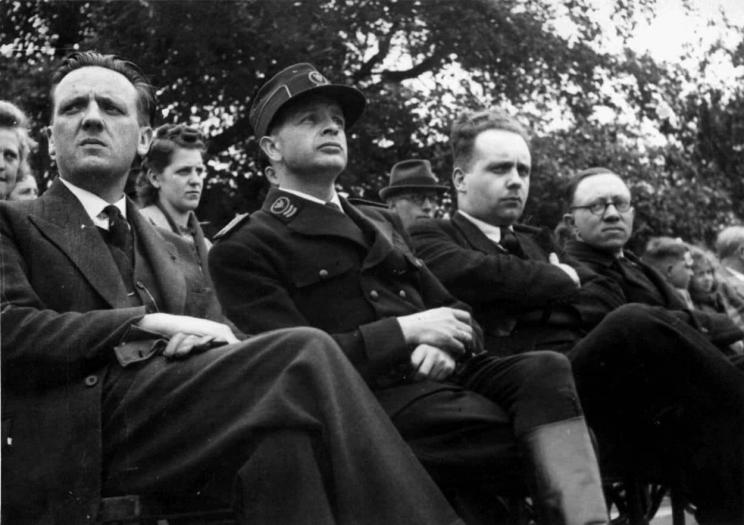Belgium WWII: local resistance, the Battle of the Bulge and the administration of occupied Belgium

Resistance at the local level
Thanks to the students of the inter-university seminar at UCLouvain and UAntwerpen, coordinated respectively by Emmanuel Debruyne and Marnix Beyen, numerous contributions offering a look at the Resistance at local level are now online. These entries focus either on individual members (August Fruythof, Clotaire Cornet, Sister Marie-Véronique, Mathieu de Jonge and others), or on a specific locality (Forchies-la-Marche, Mont-sur-Marchienne, etc.). They show us both the richness and diversity of commitments, and the potential offered by the Archives Service of War Victims and Cegesoma. They also allow for a microhistorical approach - as shown by the contribution on Antwerp solidarity networks - and demonstrate that the history of the Resistance still offers countless research prospects. All contributions relating to the history of the Resistance can also be accessed via the thematic page (“Resistance”) dedicated to it, or by activating the “resistance” tab via the various filters provided.
Also of interest is journalist Eric Loze's '4 années de Résistance', which, with the help of numerous archives, eyewitness accounts and more contemporary insights, tells in three series of five episodes the story of these underground fighters whom Belgium curiously erased from the national narrative. The first five-part series is already available on RTBF-Auvio. This series, in particular, received scientific support from several members of CegeSoma's scientific team.
The Battle of the Bulge, 80 years on
In partnership with Liberation Route Europe, some twenty contributions have been put online about the last German offensive in the West. You can access them via the “military history” filter, in the “articles” section. They cover not only key military events (Operation Greif, Battle of the Crossroads, etc.), but also massacres (Bande, Wereth, Chenogne, etc.) and the impact of the offensive on civilian life (Bourcy massacre, Malmedy and Houffalize bombardments, etc.). These short texts will be supplemented by subsequent publications on the post-war situation of the Ardennes. The anniversary also attracted considerable media interest. In particular, Cegesoma contributed to the podcast series “Ardennes '44. L'offensive du désastre”, produced by Françoise Baré, Anaïs Stas, Benjamin Verpoorten and Françoise Berlaimont.
The administration of occupied Belgium
Understanding the occupation also means looking at administrative structures, whether those that remained in place but operated in a very different context, or the new institutions created in collusion with the occupier or in the spirit of the new order. These include, of course, major conurbations such as Greater Brussels. In a different vein, the site also features a contribution on the Rural Guard (Boerenwacht/Garde rurale), a force which can be considered a kind of auxiliary police force, operating under the aegis of the National Agriculture and Food Corporation (CNAA/NLVC).
But the occupier also interfered with civil service organization. The Ordinance of 18 July 1940 gave the occupier the de facto right to prohibit civil servants from carrying out their duties, and at the end of the occupation, this took on the singular form of prohibiting resignations.
In short, these contributions explore many aspects of the history of occupied Belgium.